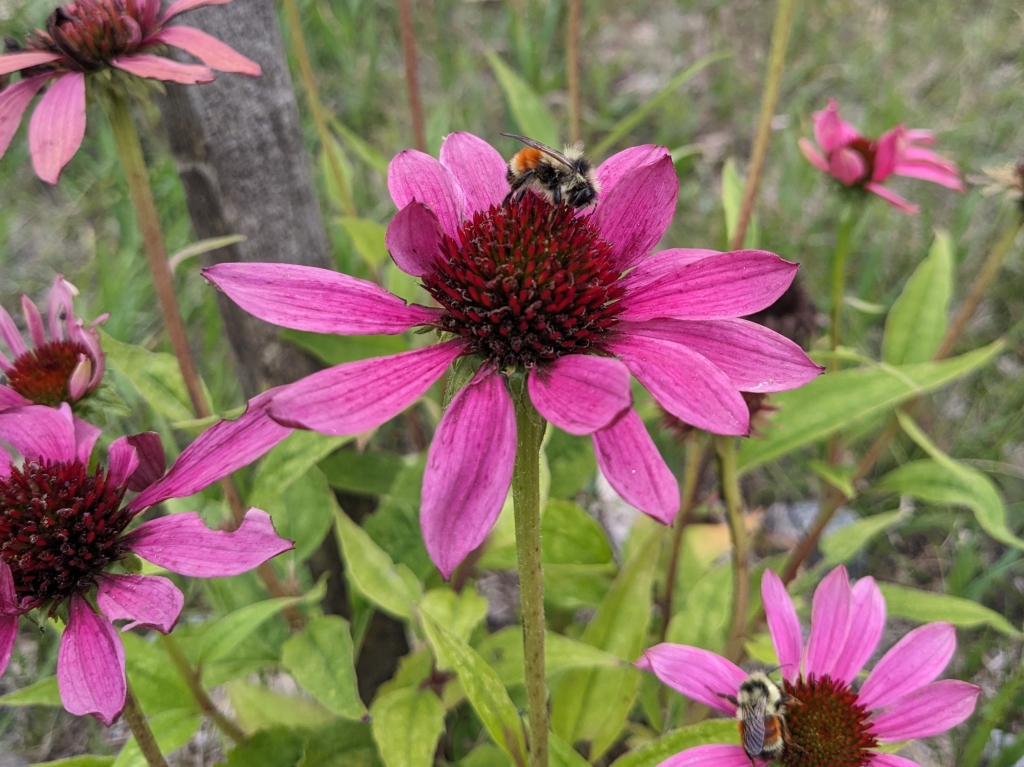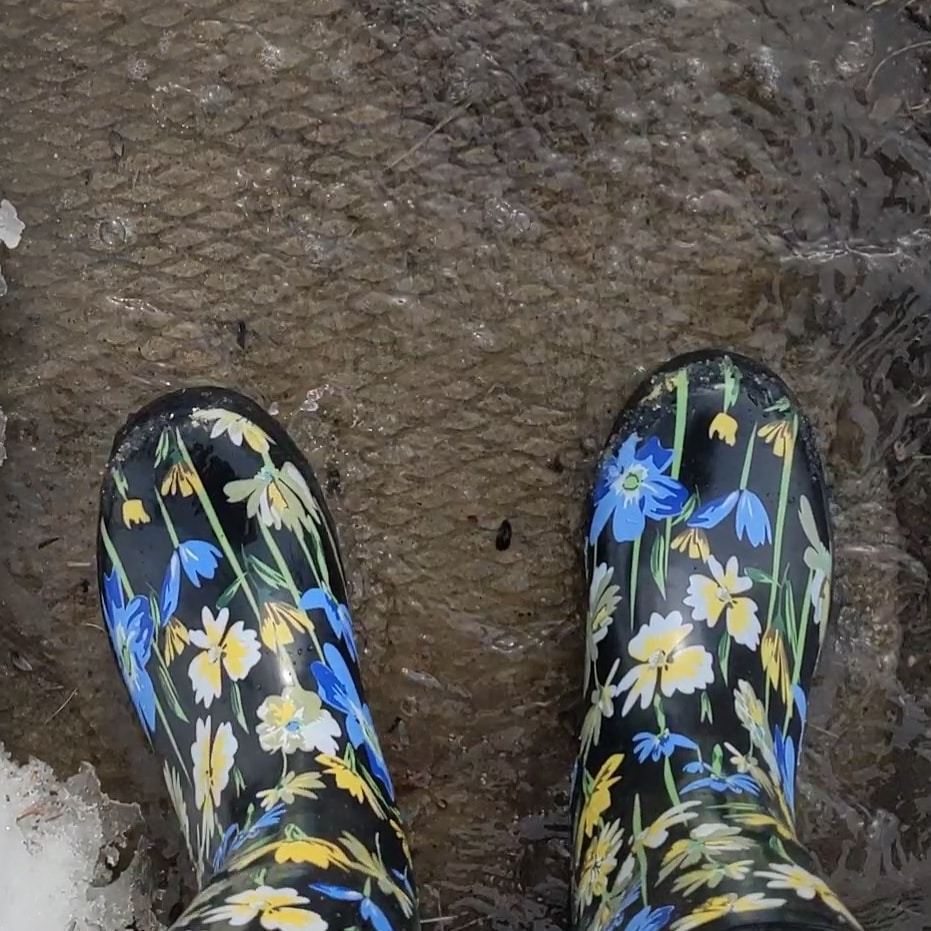Spend a few minutes looking at garden centre catalogues, gardening Instagram, or seed packets, and you’ll soon notice the repeated mention of a “zone.” If you’ve ever wondered what this is referring to, why it matters, and how to figure out the zone that applies to you, this blog post is for you.
What is the “zone” referred to on my seed packet?
First, to be clear on our terminology, the “zone” being referred to in many gardening resources is the Plant Hardiness Zone. These systems of zones, and its corresponding maps, developed separately by Natural Resources Canada and the U.S. Department of Agriculture (USDA) to help gardeners determine which plants will grow well in their region.
Natural Resources Canada divides Canada into zones based on data for seven different factors averaged over 30 years. These seven factors are:
- monthly mean of the daily minimum temperature of the coldest month,
- mean frost-free period above 0 C in days,
- amount of rainfall from June to November,
- monthly mean of the daily maximum temperatures of the warmest month,
- rainfall in January,
- mean maximum snow depth, and
- maximum wind gust in 30 years.
The USDA exclusively uses the annual extreme minimum temperatures (or coldest night of the year), averaged over 30 years, to divide the United States into Plant Hardiness Zones.
Because the zones are calculated completely differently by the two organizations, it is virtually impossible to translate between them. This is particularly important to keep in mind if you are a Canadian purchasing seeds from an American seed company or vice versa. However, Natural Resources Canada does offer a second map calculated using the USDA’s model to help you out if you wish to shop out of country.
Why do I need to know my zone?
As mentioned above, your Plant Hardiness Zone will help you select which plants will grow well in your region. Some plants need more intense sunlight, long stretches of very hot weather, or mild winters in order to thrive. For example, you wouldn’t likely be very successful if you tried to grow bananas in Manitoba (outside anyway—I recently saw dwarf bananas on the Sage Garden website!).
Checking for zone information is less of a concern if you are shopping at a local garden centre, as they are likely to carry plants that will grow well in your area. However, when purchasing seeds online or looking at perennial plants, look for details about the zone to make sure the plants you are buying will thrive where you live.

How can I determine which zone I’m in?
To find out your zone, Canadians can consult the Plant Hardiness Zone Maps provided on the Natural Resources Canada website. Americans can consult the USDA Plant Hardiness Zone Map, which was just updated in 2023. Both websites include an interactive map so you can zoom in to identify the zone for your specific area. An update is expected for the Canadian map sometime in 2024, so be sure to check back again later this year to see if your zone has changed.
Here in Manitoba, zones range from 0a in the north to 4a in the south. Below are the zones for some of the larger communities in the province.
- Altona – zone 4a
- Brandon – zone 3b
- Dauphin – zone 3b
- Flin Flon – zone 2b
- Morden – zone 4a
- Neepawa – zone 3b
- Niverville – zone 3b
- Norway House – zone 2b
- Oakbank – zone 3b
- Portage la Prairie – zone 4a
- Selkirk – zone 3b
- Steinbach – zone 3b
- Stonewall – zone 3b
- The Pas – zone 2b
- Thompson – zone 1b
- Winnipeg – zone 4a
- Winkler – zone 4a
Hopefully this post leaves you feeling a bit more confident in understanding your Plant Hardiness Zone and how to use it.
Do you know your zone, or need help figuring it out? Let us know in the comments!
Sources
Part of why I created this blog was to record the answers to gardening questions I’ve had along the way. As a person who loves research, I thought it would be handy to have that research stored together, in a place where I could also share it with others. I encourage you to do your own research on anything I have posted, and I’ve included my sources for information that isn’t based on personal experience—both so I can go back and reference the original source for something, and so you can do the same. Let me know if you spot any errors, so I can correct them!
- Lebel, Jacquelyn. (2023, December 19). Canada’s plant hardiness zones map ready to bloom for 1st time in 10 years. Global News. https://globalnews.ca/news/10146246/canadas-plant-hardiness-zones-map-ready-to-bloom-for-1st-time-in-10-years/
- Natural Resources Canada. (n.d.) Plant Hardiness Zone by Municipality. http://planthardiness.gc.ca/?m=22&lang=en
- Natural Resources Canada. (n.d.) Plant Hardiness of Canada. http://planthardiness.gc.ca/?
- Sage Garden Greenhouses (n.d.). Live Plant – Banana, Dwarf Cavendish (Edible). Retrieved January 23, 2024, from https://sagegarden.ca/products/banana-dwarf-cavendish-edible-3-5?_pos=1&_sid=c2ed6d171&_ss=r
- U.S. Department of Agriculture. (2023, November 15). USDA Unveils Updated Plant Hardiness Zone Map [Press release]. https://www.ars.usda.gov/news-events/news/research-news/2023/usda-unveils-updated-plant-hardiness-zone-map/
- U.S. Department of Agriculture. (n.d.) 2023 USDA Plant Hardiness Zone Map. https://planthardiness.ars.usda.gov/


1 thought on “How to Determine Your Plant Hardiness Zone—and Why You Need to in the First Place”